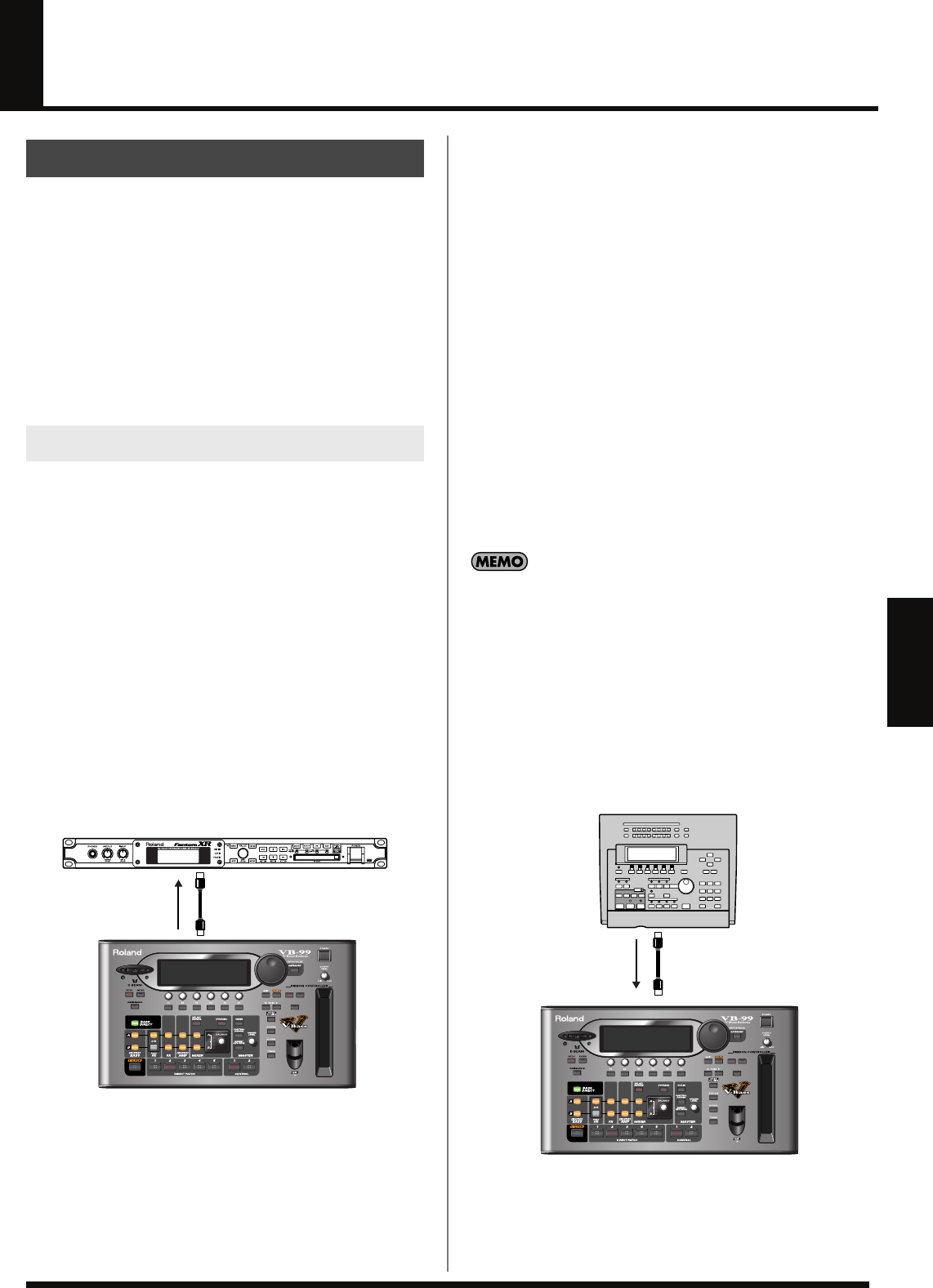
49
Chapter 5
Chapter 5 Using MIDI
MIDI, an abbreviation for Musical Instrument Digital Interface, is a
universal standard that enables musical instruments to exchange
musical performance data, messages concerning changes in the
sounds, and other information. Any device that conforms to the
MIDI specifications can communicate (to the extent that is relevant
to both devices) with any other MIDI device, even those that were
made by a different manufacturer or that belong to a different
category of instrument.
Under the MIDI specifications, performance data produced by such
actions as playing a keyboard or pressing a pedal is handled as MIDI
messages.
Using MIDI, you can carry out the following operations with the VB-
99.
If using the VB-99 with an FC-300 connected, also refer to
“Chapter 4
Using the VB-99 in Combination with an FC-300”
(p. 46).
* Use of MIDI requires that the MIDI channels of connected devices
be matched.
Data cannot be transmitted to or received from other MIDI devices
unless the MIDI channels are set correctly.
Operating from the VB-99
Outputting Program Change Messages
When a patch is selected with the VB-99, the VB-99 simultaneously
transmits a Program Change message corresponding to the selected
number. The external MIDI device switches its settings in response
to the received Program Change message.
Outputting Control Change Messages
Data describing the action of an external device (expression pedal or
footswitch) connected to the VB-99 is output as Control Change
messages. These messages can be used for such tasks as adjusting
external MIDI devices’ parameters.
Outputting Performance Data
The bass’s performance data can be output as Note messages and
Bend messages, allowing you to perform through synthesizer sound
modules and other devices connected to the VB-99. For more
detailed information, refer to
“Playing an External Synthesizer
Sound Module (BASS TO MIDI)”
(p. 58).
Transmitting Data
You can use Exclusive messages to transmit settings for effect
sounds and other data stored in the VB-99 to other MIDI devices.
This allows you to give another VB-99 the identical settings and to
save effect sound settings to MIDI sequencers and other such
devices.
Controlling the VB-99 from an
External MIDI Device
Switching Patch Numbers
The VB-99’s patches switch immediately in response to Program
Change messages received from external MIDI devices.
You can set the correspondence between MIDI Program
Change messages and the VB-99’s patches with the
“RX
PC MAP (RECEIVE PROGRAM CHANGE MAP)”
(p.
55). Set this to ensure correspondence of the VB-99’s
effect sounds with those of other MIDI devices.
The connections shown in the diagram below are used when playing
your bass backed by an automatic sequencer performance. The VB-
99’s patches change automatically when a Program number is
entered with the performance data at the point where you want the
VB-99’s patches to change.
About MIDI
What You Can Do Using MIDI
MIDI OUT
MIDI IN
MIDI IN
MIDI OUT
VB-99_e.book 49 ページ 2008年8月18日 月曜日 午後1時10分


















